Potrebujeme váš súhlas na využitie jednotlivých dát, aby sa vám okrem iného mohli ukazovať informácie týkajúce sa vašich záujmov. Súhlas udelíte kliknutím na tlačidlo „OK“.
ASTM E2264-05(2013)
Standard Practice for Determining the Effects of Temperature Cycling on Fenestration Products
Automaticky preložený názov:
Štandardné praktiky pre stanovenie vplyvu teploty kole na presvetľovací produkty
NORMA vydaná dňa 1.11.2013
Informácie o norme:
Označenie normy: ASTM E2264-05(2013)
Poznámka: NEPLATNÁ
Dátum vydania normy: 1.11.2013
Kód tovaru: NS-44841
Počet strán: 7
Približná hmotnosť: 21 g (0.05 libier)
Krajina: Americká technická norma
Kategória: Technické normy ASTM
Kategórie - podobné normy:
Anotácia textu normy ASTM E2264-05(2013) :
Keywords:
accelerated aging, air leakage, convective hot air, differential air temperatures, durability, fenestration, infrared radiation, temperature cycling, window performance, ICS Number Code 91.060.50 (Doors and windows)
Doplňujúce informácie
| Significance and Use | ||||||||||||
|
5.1 Fenestration products, when exposed to differential temperatures (constant higher or lower temperatures on the exterior and room temperature on the interior) or temperature cycling (relatively constant room temperature on the interior and repeated cycling of higher and lower temperatures on the exterior), will have stresses induced on components that may cause failure or changes in overall system performance. Some of these changes may be temporary, with their effects on system performance lasting only during the cyclical temperature exposure. Other changes may be more permanent because of the failure of critical components or irreversible changes in those critical components that control overall system performance. 5.2 In this practice, a procedure is provided for evaluating the effects of exposure to temperature cycling at standardized conditions on fenestration products. It is useful for product evaluation and development. Interrelationships between window components can be studied under laboratory conditions simulating in-service temperature extremes. 5.3 Laboratory approximation of in-service temperature cycling and temperature extremes is a useful tool for the fenestration designer. These conditions help in evaluating designs and components for absolute and relative interactions on overall performance when these products are installed and functioning in residential and commercial buildings. 5.4 This practice is limited to temperature exposure and temperature cycling only. Temperature is only one of many environmental factors that affect field performance of fenestration products. Products made with different materials or construction methods may show specific sensitivity to different environmental factors, such as humidity, ultraviolet radiation, or airborne chemicals. 5.5 Because of the complexity and cost of a single apparatus capable of measuring window performance, providing temperature cycling, and providing infrared radiation exposure, more than one test apparatus may be required to complete this practice. If multiple test apparatus are used, care shall be taken when moving the specimen from one apparatus to another to protect them from damage by racking, twisting, dropping, or other causes of distortion. 5.6 In this practice, specimens are subjected to one of a variety of possible variations of ambient air temperature or surface temperature cycling conditions by using either convective hot air or exposure to infrared radiation. Therefore, the results are valid only for the test method and conditions used. 5.7 At present, no correlation data exists that relates this practice to field performance. |
||||||||||||
| 1. Scope | ||||||||||||
|
1.1 This practice covers the testing of any fenestration products that are installed with the exterior surface exposed to weathering conditions. It is intended to measure the response of the fenestration product to temperature cycles with the temperature changes being induced by controlling the air temperature on the exterior (weather side) or by exposing the product to infrared radiation, or both. When tested using this practice, fenestration products are exposed to standard cycles of elevated and depressed ambient air and surface temperatures. Test methods are specified for evaluating changes in performance that may occur as a result of temperature cycling. With this practice, seasonal and diurnal temperature conditions are simulated in a controlled laboratory apparatus. 1.2 In this practice, two test methods, Test Method A and Test Method B, are described for exposing the exterior surface of fenestration products to the elevated portion of a standardized temperature cycle. The purpose for providing two test methods of exposure is to address two distinct needs of the fenestration industry. 1.2.1 Test Method A uses infrared radiation to increase the surface temperature of the fenestration product and uses a black panel temperature sensor placed in front of the specimen's exterior surface to sense the temperature. The surface temperature of the black panel temperature sensor is raised to a preset level above the exterior ambient air temperature. This provides a more realistic test for temperature exposure based on atmospheric solar radiation and its effect on the temperature increase of exterior building materials. This method should be used when the number of cycles can be large and the outcome is critical for field correlation. Test Method A is intended for comparative product evaluations. 1.2.2 Test Method B uses elevated temperature produced by convective hot air to achieve the exterior air temperature set-point. It provides a more sever test because it elevates the exterior air temperature to levels that are not obtainable under in-service conditions. This provides a more rapid degradation cycle for accelerating the effects of the temperature exposure cycling on some materials and fastening methods used in fenestration products. This method is intended to be used when the number of temperature cycles must be minimized or the outcome is not critical for field correlation. Test Method B is intended for research and development purposes and not for comparative product evaluations. 1.3 In this practice, three temperature exposure levels are suggested for each method: Level 1 is a low temperature exposure, Level 2 is a moderate temperature exposure, and Level 3 is a high temperature exposure. The purpose of providing three levels of temperature exposure is to accommodate different grades of fenestration products based on their designs and their potential geographic installation locations. Other temperature levels may be selected by the specifier. 1.3.1 Performance characteristic measurements are used to evaluate the effects on the fenestration product caused by temperature cycling. They are measured by the following tests: 1.3.1.1 Air leakage rates shall be measured in accordance with Test Method E283. 1.3.1.2 Water penetration resistance shall be measured in accordance with Test Method E331 or Test Method E547. 1.3.1.3 Structural strength shall be measured in accordance with Test Method E330. This test shall only be performed when specified and only after temperature cycling is completed. 1.3.2 The test specifier may also choose additional tests to characterize fenestration product performance. (See Note 3 for suggested additional tests.) 1.3.3 For the purposes of product comparison, these tests are performed at or near standard laboratory conditions, but for research and development purposes, they may also be performed during an elevated or depressed portion of the temperature cycle in order to measure the effects of the temperature extreme on the performance parameter being evaluated. For the purposes of comparative evaluation, the parameters defined in 1.4 Values reported in SI units are to be regarded as the standard. The units reported in parentheses are for information only. 1.5 Testing organizations using this practice shall have staff knowledgeable in heat transfer, fluid mechanics, instrumentation practice, and the specific requirements for the test methods specified. Testing personnel shall have a general knowledge of fenestration systems and components being tested. 1.6 This standard does not
purport to address all of the safety concerns, if any, associated
with its use. It is the responsibility of the user of this standard
to establish appropriate safety and health practices and determine
the applicability of regulatory limitations prior to use.
Standard Test Method for Structural
Performance of Exterior Windows, Doors, Skylights and Curtain Walls
by Uniform Static Air Pressure Difference Standard Test Method for Water
Penetration of Exterior Windows, Skylights, Doors, and Curtain
Walls by Uniform Static Air Pressure Difference Standard Test Method for Water
Penetration of Exterior Windows, Skylights, Doors, and Curtain
Walls by Cyclic Static Air Pressure Difference Standard Test Method for Determining Rate
of Air Leakage Through Exterior Windows, Curtain Walls, and Doors
Under Specified Pressure Differences Across the Specimen Standard Terminology of Building
Constructions Standard Practice for Exposing
Nonmetallic Materials in Accelerated Test Devices that Use
Laboratory Light Sources |
Podobné normy:
Historická
1.3.2011
Historická
1.10.2012
Historická
15.4.2014
Historická
1.2.2014
Historická
1.5.2014
Historická
1.5.2014
Odporúčame:
Aktualizácia technických noriem
Chcete mať istotu, že používate len platné technické normy?
Ponúkame Vám riešenie, ktoré Vám zaistí mesačný prehľad o aktuálnosti noriem, ktoré používate.
Chcete vedieť viac informácií ? Pozrite sa na túto stránku.


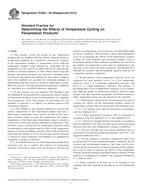
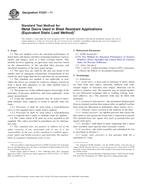 ASTM F2247-11
ASTM F2247-11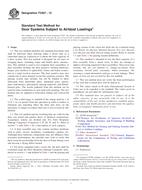 ASTM F2927-12
ASTM F2927-12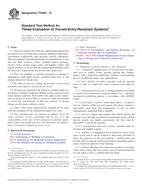 ASTM F3038-14
ASTM F3038-14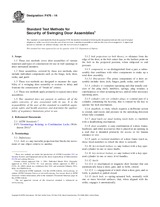 ASTM F476-14
ASTM F476-14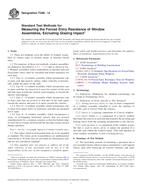 ASTM F588-14
ASTM F588-14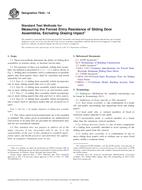 ASTM F842-14
ASTM F842-14
 Cookies
Cookies
